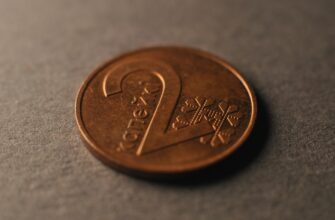The Evolution of the Rupiah to USD Exchange Rate
Indonesia’s journey from colonial currency to economic sovereignty began with the introduction of the Rupiah (IDR) in 1949. Initially pegged to the Dutch Guilder, the currency shifted to a USD peg in the 1950s at IDR 3.8 = USD 1 – a rate that now seems unimaginable. This fixed system collapsed during hyperinflation in the 1960s, leading to a dramatic devaluation. By 1965, Indonesia redenominated the Rupiah (replacing 1,000 old IDR with 1 new IDR), resetting the stage for modern exchange rate policies. The New Order government then adopted a managed float system, marking the start of the Rupiah’s dynamic relationship with the US dollar that continues today.
Major Historical Milestones Impacting IDR/USD
- 1965-1970: Post-redenomination stability at ~IDR 250/USD
- 1978: “November Devaluation” drops Rupiah 50% overnight to IDR 625/USD
- 1997-1998 Asian Financial Crisis: IDR collapses from 2,400 to 16,800/USD – the weakest in history
- 2008 Global Crisis: IDR falls 30% to 12,000/USD amid capital flight
- 2013 “Taper Tantrum”: US policy shifts trigger 26% depreciation
- 2020 Pandemic: IDR hits IDR 16,575/USD as COVID disrupts markets
- 2022-2023: Strengthens to ~IDR 15,000/USD range amid commodity boom
Key Drivers of Rupiah-Dollar Fluctuations
Indonesia’s exchange rate reflects complex economic forces. Commodity prices (palm oil, coal, nickel) directly impact trade surpluses – when prices rise, IDR often strengthens. US Federal Reserve policies trigger capital flows; higher US rates typically weaken emerging currencies like IDR. Domestic factors include:
- Bank Indonesia’s interest rate decisions
- Inflation differentials with the US
- Political stability and reform progress
- Foreign exchange reserves (currently ~$130B)
External shocks like the 1997 crisis proved how quickly sentiment can override fundamentals, causing extreme volatility.
Tracking Modern Rupiah-USD Exchange Rates
Since adopting a free-floating system in 1997, the Rupiah trades 24/5 on global markets. Real-time tracking is accessible through:
- Bank Indonesia’s official website and mobile app
- Financial platforms like Bloomberg, Reuters, or XE.com
- Indonesian bank rate portals (e.g., BCA, Mandiri)
- Forex trading terminals with IDR/USD pairs
Daily fluctuations now typically range 0.5-1%, though interventions occur during excessive volatility. Long-term trends still hinge on Indonesia’s economic resilience and global dollar strength.
Rupiah to USD History FAQ
Q: What was the all-time high for USD/IDR?
A: The peak was IDR 16,800/USD in June 1998 during the Asian Financial Crisis, when Indonesia’s economy contracted 13%.
Q: How does Indonesia stabilize the Rupiah?
A: Bank Indonesia uses interest rate adjustments, direct forex market intervention, and requires exporters to repatriate earnings. Coordinated fiscal-monetary policies also build market confidence.
Q: Why is the Rupiah considered volatile?
A: As an emerging market currency, IDR reacts sharply to global risk sentiment, commodity cycles, and sudden capital outflows – amplified by Indonesia’s current account deficits.
Q: How does a weak Rupiah affect Indonesians?
A: It increases import costs (fueling inflation), raises foreign debt burdens, but boosts competitiveness for exports and tourism. The net impact varies by economic sector.








